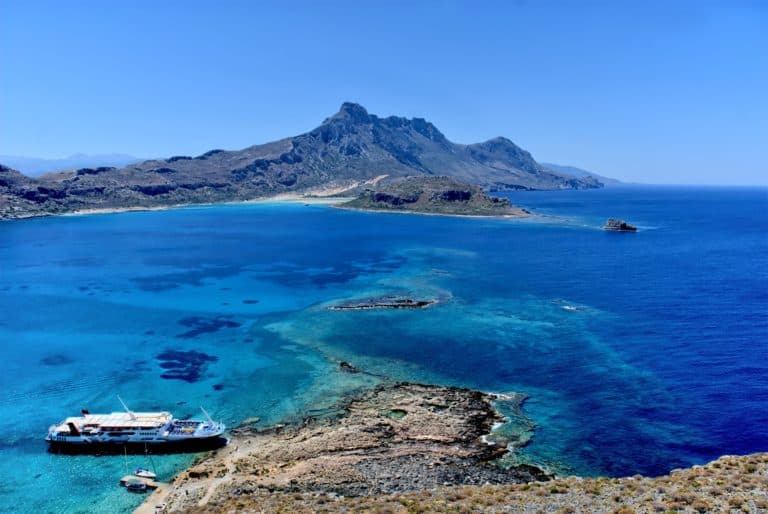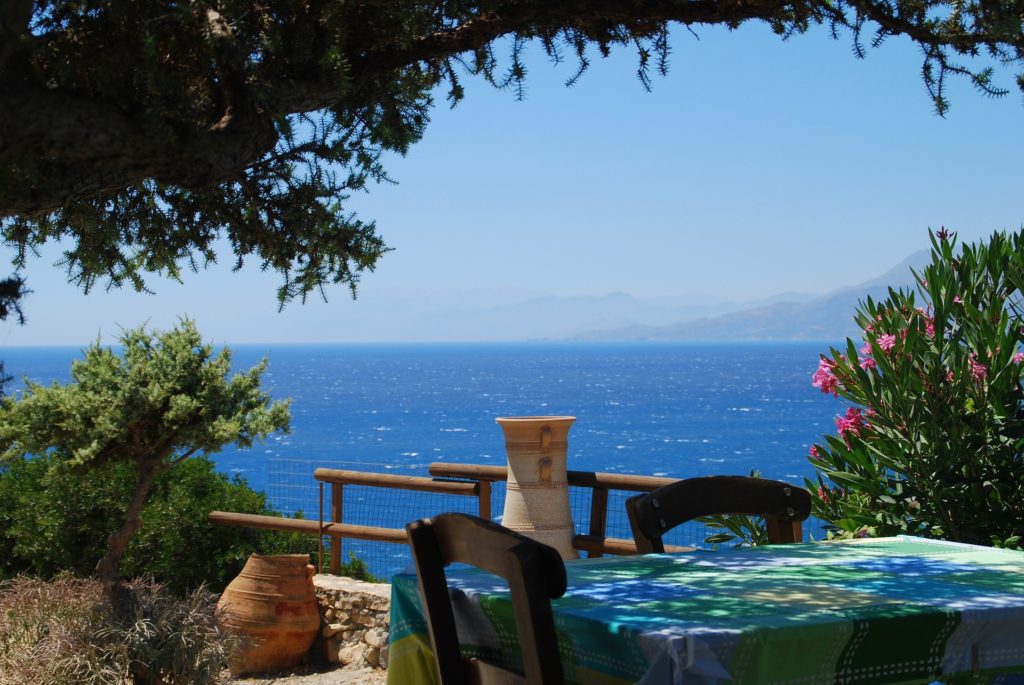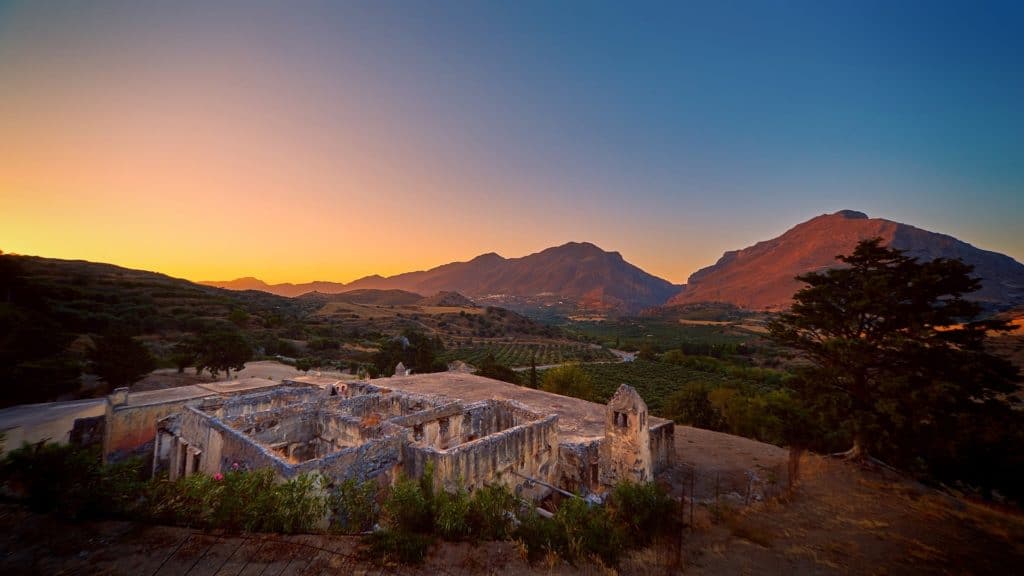
Crete is one of the best-known holiday islands in Greece, and it’s wide-ranging in its tourist offer- here you can find the perfect setting for a family holiday with the kids, a great adult holiday by the pool with drinks or a tour of adventure and nature.
The island tempts with mountains, deep valleys, idyllic olive groves, quaint towns and long beaches.
Best time to travel to Crete
Crete is good all year round and is said to have Europe’s mildest climate.
Spring
Spring comes early to Crete. Already at the end of March, everything is sprouting and nature is about to both smell and looks amazing. Best month to experience this is in April. Here you will be able to smell all kinds of spices, see exotic flowers along the roads and by the houses – the island at this time is a real delight for the senses.
Summer
The high season in Crete is from July to October, and here you will find tourists almost everywhere on the island, with restaurants, bars and beaches all bustling with life. During this period, rainfall is low while temperatures easily reach 40 degrees on the really hot days, peaking in August when the faint-hearted need to watch out for the sun.
May and June are the ideal months to book your trip to Crete. Here it only rains occasionally and temperatures are more humane at between 18-20 degrees while the sea temperature is at 18-22 degrees. At this time, it is also not crowded with other tourists, so you have a better chance of getting a table at good eateries or finding a spot on the beach and by the pool.
Post main season
September and October are a good time to visit Crete, as temperatures have dropped to 24-27 degrees, while the water still retains its warm 27 degrees. At the end of October, the rains will start to come and there can be days of rain and thunder.
Winter
Winter is cool and there will be increasing rainfall, peaking in January and February. Although colder, a visit to Crete in winter can still be nice and warm as high as 18 degrees on a good day. The bathing water is still fairly good well into December, but on the other hand, there are a lot fewer hours of sunshine than in summer. Mid-summer is around 12-13 hours, and winter is as low as 3-4 hours.

Climate on the island
Crete has a typical Mediterranean climate. Summer is hot and dry and winter mild with rain. But, despite the size of the island, there is a big difference in climate whether you are on one side of it or the other. The south coast is warmer and has longer, drier summers than the north coast. And in terms of precipitation, rain falls mostly in the center and west.
Adventures on Crete
If you’re tired of sitting by the pool or relaxing on the beach, there’s plenty to do in Crete. It’s a good idea to hire a car so you can easily get around to the best spots.
If you want to see beautiful scenery, head up into the mountains – here fields, old farms, and goats sit side by side with wild herbs, rocks, and trees.
If you don’t want to rent a car, you can still explore the island. All hotels offer tours to the most popular sites, and a good excursion is the Samaria Gorge, Europe’s longest gorge at 18 kilometers. You can make the trek through it, but just remember to wear sensible footwear, bring lots of water, and maybe some food… AND beware of the sun and heat.
You can also visit the beautiful beach of Elafonissi on the south-western tip of Crete or head to Knossos, King Minos’ imposing palace outside the capital. This is one of the most famous landmarks of Greece.
Here is s small insider tip, if you want to avoid big crowds, head over to Eastern Crete, you will still be awarded with landscapes and beaches however not so overcrowded.
Cuisine on Crete
Crete has a lot to offer when it comes to food and drink.
If you’re eating out, you can’t go past the Greek salad, dakos, moussakka, lamb and bread dipped in olive oil or tzatziki. Every meal is almost a feast for the taste buds and it tends to be made up of simple and good ingredients.
Many tourists prefer beer and wine with their food, but be brave and try a Greek coffee, raki or a Greek cognac.
On an island as touristy as Crete, there can be many food traps and restaurants that don’t live up to expectations. So if you want to ensure a good meal, go where the Greeks themselves eat.
Shopping in Crete
There are several towns in Crete where you can shop for both clothes and handicrafts. In the town of Chania, for example, there is a lively trade from the market streets and small souvenir shops. There is also a market hall where you can buy fresh produce and delicious delicacies.
Crete is renowned for its wool production, so head to the town of Anógia, which is full of woven carpets and tablecloths – BUT keep an eye on where what you’re buying is made. You risk buying a bedspread made in China instead of one made in Crete.
In the town of Margarítes you can buy ceramics, and the town is so famous for it that tourists flock to the town every day just to buy it. Prepare yourself for a huge selection, so it can be hard to choose. On the other hand, there is something for every budget.
Suggestions for what to buy in Crete: olive oil, fresh oranges, herbs, spices, sheep’s cheese and fresh vegetables and jewelry.
Accommodation on Crete
Crete is full of places to stay during your holiday. You can book the traditional package holidays from travel companies, or you can book flights and accommodation separately – if you do the latter, you can book accommodation at most hotels through their website.
If you spend a little extra time researching, you can also find and book many fine places, hotels, rooms, houses, and accommodations that are not part of a hotel chain. Generally, accommodation offer on the island can be found at a very affordable price, if you avoid the high season in August. There are many private apartments, with swimming pools that will fill up every expectation. Also, consider booking an apartment that mor ein the interior, they will have lower prices by default, and you can rent a scooter also for a very affordable price, and drive to the beach each day.
Facts about Crete
Location: located off the coast of Greece in the Mediterranean Sea and, according to Greek mythology, the birthplace of Zeus himself.
Geography: Crete is the largest island in Greece and is 8300 km2 and the southernmost Greek island. It is made up of limestone mountains, which are also reflected in the landscape in the form of mountains and mountain peaks. The island has more than 150 kilometers of sandy beaches.
Language: Greek – but on a tourist island like this, pretty much everyone can speak and understand English for domestic purposes.
Currency: Euro
